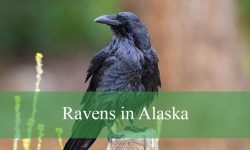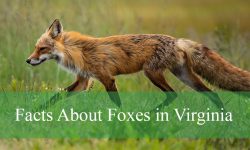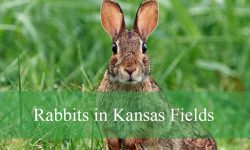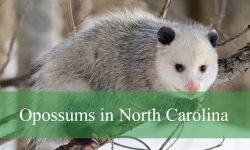Wyoming is home to vast open ranges, towering mountains, and lush river valleys that provide ideal conditions for deer populations. Two primary types of deer live in this state: the mule deer and the white-tailed deer. Each species has distinct physical characteristics, behaviors, and habitat preferences, making them fascinating to observe in the wild. Whether you are a wildlife enthusiast, a hunter, or a casual visitor, learning about these deer enhances the experience of exploring Wyoming’s diverse landscapes.
The following guide provides detailed information about the mule deer and white-tailed deer found in Wyoming. It covers their identification, size, behavior, diet, reproduction, and habitat. Additionally, you will discover interesting facts about their role in Wyoming’s ecosystems, the challenges they face, and the best times and places to observe them.
Mule Deer in Wyoming
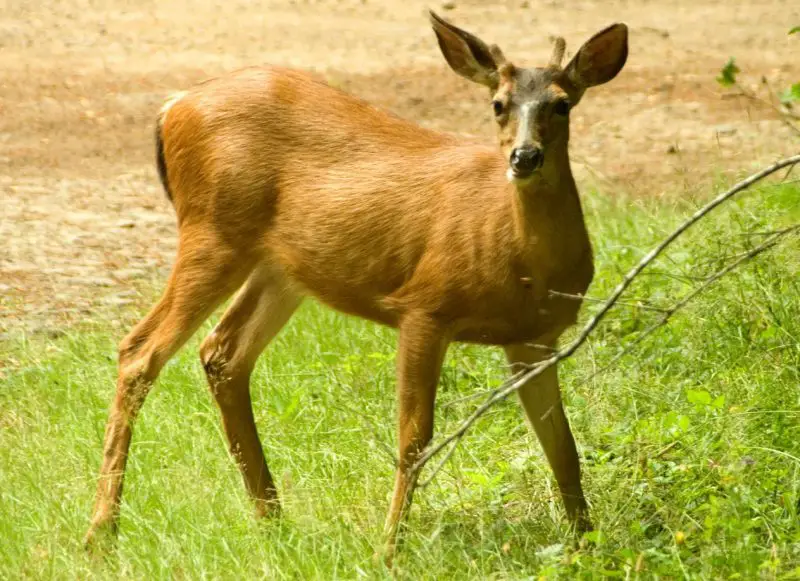
Characteristics and Identification
The mule deer is the most iconic deer species in Wyoming and is especially recognized for its large, mule-like ears that give it its name. These ears are nearly two-thirds the length of the head, helping the animal detect predators in the open terrain. Mule deer also display a black-tipped tail that is relatively short compared to the long, broad tail of white-tailed deer. Their antlers typically grow in a forked pattern, with tines branching upward rather than curving forward.
In terms of coat color, mule deer have a grayish-brown body that blends perfectly with sagebrush and mountainous environments. During winter, their coat becomes thicker and more muted, offering insulation against Wyoming’s harsh climate. Bucks can grow impressive antlers that are shed and regrown annually, peaking in size during the fall rutting season.
Size and Weight
Mule deer are medium to large-sized ungulates. Adult bucks in Wyoming usually weigh between 150 and 250 pounds, with some exceptional individuals reaching 300 pounds in prime habitat. Does are considerably smaller, averaging 110 to 150 pounds. At the shoulder, mule deer stand about 36 to 42 inches tall. Their size makes them well-suited for surviving Wyoming’s rugged landscapes, where they must cover vast distances during seasonal migrations.
Behavior and Social Patterns
Mule deer in Wyoming are known for their seasonal migrations, often traveling dozens of miles between summer and winter ranges. In summer, they occupy higher elevations with lush vegetation, while in winter they descend into valleys and foothills where food is more accessible. These migrations are among the longest recorded for deer in North America, showcasing their resilience and adaptability.
Socially, mule deer often form small groups, especially during winter when they gather in herds to improve survival rates. Bucks are generally solitary or travel in bachelor groups outside of the breeding season, but during the rut in late fall, they become highly competitive, engaging in antler battles to establish dominance and win mates.
Diet and Feeding Habits
As browsers, mule deer primarily feed on shrubs, forbs, and woody plants. In Wyoming, they consume sagebrush, bitterbrush, serviceberry, and mountain mahogany, all of which are abundant in their habitats. During summer, they also eat a variety of wildflowers and grasses to take advantage of the nutrient-rich forage. In winter, their diet becomes more limited, and they rely heavily on woody browse to survive.
Mule deer feed mostly during dawn and dusk, following a crepuscular pattern that helps them avoid predators and human disturbance. Their ability to adapt feeding habits to seasonal changes plays a key role in their survival across Wyoming’s varied environments.
Predators and Threats
Mule deer in Wyoming face natural predation from mountain lions, coyotes, and wolves in certain regions. Fawns are especially vulnerable to predation during their first few weeks of life. Beyond predators, mule deer populations are impacted by harsh winters, habitat loss from development, and vehicle collisions. Disease, such as chronic wasting disease (CWD), also poses a significant threat to herd health.
Reproduction and Life Cycle
The breeding season for mule deer, known as the rut, occurs in late November through early December in Wyoming. Bucks compete fiercely for does, using their antlers in sparring matches. After a gestation period of about 200 days, fawns are born in late spring or early summer, usually in secluded areas with tall grass or shrubs that provide cover. Twin births are common when food resources are plentiful, which helps sustain populations despite predation.
Habitat and Distribution in Wyoming
Mule deer are widely distributed across Wyoming, particularly in the western half of the state. They thrive in sagebrush steppe, foothills, and mountain ranges such as the Wind River Range and the Bighorn Mountains. In winter, they move to lower elevations like river valleys and basins, where snow cover is lighter and browse is more available. This adaptability allows them to inhabit a wide range of Wyoming’s ecosystems.
Fun Facts about Mule Deer in Wyoming
One fascinating fact about mule deer is their unique mode of locomotion called “stotting” or “pronking,” where all four feet hit the ground at once in a bounding motion. This behavior helps them navigate steep and rocky terrain while escaping predators. Wyoming also holds some of the longest documented mule deer migrations in North America, with certain herds traveling over 150 miles seasonally. These migrations are critical to the ecological balance of the state’s landscapes.
White-Tailed Deer in Wyoming
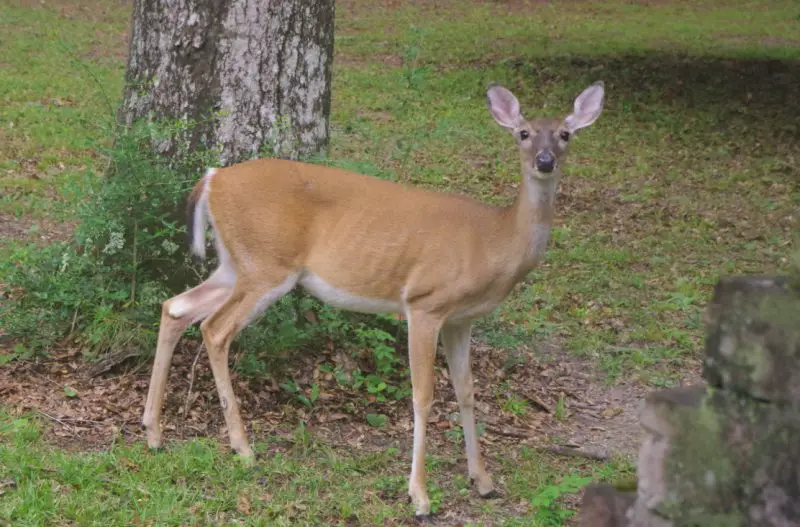
Characteristics and Identification
White-tailed deer, though less numerous than mule deer in Wyoming, are still an important part of the state’s wildlife. They are smaller, sleeker, and more secretive than mule deer. Their most distinctive feature is the long, broad tail with a white underside, which they raise like a flag when alarmed. Unlike mule deer, their antlers curve forward with a main beam, and their ears are smaller in proportion to their head.
Their coats vary seasonally, with a reddish-brown hue in summer and a dull grayish-brown in winter. White-tailed deer have a more compact body and a less stocky build than mule deer, making them better suited for navigating forests and riparian corridors.
Size and Weight
Adult white-tailed bucks in Wyoming generally weigh between 120 and 220 pounds, while does average 90 to 130 pounds. They stand 30 to 36 inches at the shoulder, making them slightly smaller than mule deer. Despite their smaller size, white-tailed deer are highly adaptable and thrive in environments ranging from wooded river valleys to agricultural fields.
Behavior and Social Patterns
White-tailed deer are known for their elusive behavior. They rely on stealth and cover rather than migration to survive Wyoming’s changing seasons. Although they may shift ranges locally depending on food availability and snow depth, they do not undertake the same extensive migrations as mule deer.
Social structure among white-tailed deer typically involves small family groups. Does often remain with their fawns for extended periods, while bucks live solitarily outside of the breeding season. During the rut, bucks compete for access to does, using displays of dominance and occasional antler clashes.
Diet and Feeding Habits
White-tailed deer are generalist feeders with a diet that varies by season. In Wyoming, they consume agricultural crops, grasses, acorns, berries, and woody plants. Riparian zones provide abundant food sources, including willow and cottonwood shoots. Their flexible diet allows them to adapt to different landscapes and even thrive in areas influenced by human activity.
Like mule deer, white-tailed deer are crepuscular, feeding most actively at dawn and dusk. This feeding pattern minimizes encounters with predators and human disturbance.
Predators and Threats
Predation on white-tailed deer in Wyoming comes primarily from coyotes, mountain lions, and bobcats. Young fawns are particularly at risk. In addition to predation, populations face challenges from disease, vehicle collisions, and competition with mule deer in overlapping habitats. Chronic wasting disease has also been documented in Wyoming’s white-tailed deer herds, raising concerns about long-term impacts.
Reproduction and Life Cycle
The rut for white-tailed deer in Wyoming occurs from late October through November. Bucks use scrapes and rubs to mark territory and attract does. After a gestation period of about 200 days, fawns are born in May or June. Single fawns are common in younger does, while older females often give birth to twins. The survival rate of fawns depends heavily on food availability and predator pressure.
Habitat and Distribution in Wyoming
White-tailed deer are more common in the eastern and northern parts of Wyoming, particularly in river valleys, agricultural lands, and wooded areas. They prefer denser cover than mule deer, which allows them to evade predators more effectively. Along the Bighorn River and Platte River, populations are particularly robust due to abundant forage and shelter.
Fun Facts about White-Tailed Deer in Wyoming
An interesting fact about white-tailed deer is their ability to run at speeds of up to 35 miles per hour and leap over fences as high as 8 feet. This athleticism makes them highly successful at escaping predators. Another unique aspect in Wyoming is that white-tailed deer have expanded their range westward in recent decades, adapting to areas that were once primarily dominated by mule deer.
Best Time and Places to Observe Deer in Wyoming
Wyoming offers excellent opportunities to observe both mule deer and white-tailed deer throughout the year. The best times for viewing are typically during early morning and late evening when deer are most active. Fall is especially rewarding, as the rut brings more visible deer activity, and bucks can be seen with fully developed antlers engaging in breeding behavior.
For mule deer, some of the best observation areas include the Red Desert, Wind River Range, Bighorn Mountains, and Yellowstone National Park. These regions are renowned for supporting large herds and providing breathtaking scenery. For white-tailed deer, river valleys such as the Platte River, Bighorn River, and parts of eastern Wyoming farmland are prime locations.
Winter months also provide good viewing opportunities, as deer move to lower elevations and congregate in larger numbers. However, observers should take care not to disturb them during this critical survival period when food is scarce.
Conclusion
Wyoming is a remarkable state for experiencing the diversity of deer, with both mule deer and white-tailed deer thriving in its landscapes. Mule deer dominate the open sagebrush flats and mountain slopes, while white-tailed deer prefer wooded valleys and agricultural regions. Each species has unique characteristics, behaviors, and ecological roles that contribute to the richness of Wyoming’s wildlife.
Understanding their identification, feeding habits, reproductive cycles, and seasonal movements not only helps with wildlife observation but also supports conservation efforts. From the dramatic migrations of mule deer to the stealthy habits of white-tailed deer, Wyoming’s deer populations are a natural treasure worth protecting. For those who venture into the state’s wildlands, encountering these animals is an unforgettable experience that highlights the beauty and resilience of nature.
FAQs about Deer in Wyoming
How many types of deer live in Wyoming?
Wyoming is home to two primary types of deer: the mule deer and the white-tailed deer. Mule deer are more widespread across the state, especially in the west and central regions, while white-tailed deer are more common in river valleys and the eastern parts of Wyoming.
What is the difference between mule deer and white-tailed deer in Wyoming?
Mule deer have large, mule-like ears, forked antlers, and a black-tipped tail, while white-tailed deer have smaller ears, forward-curving antlers, and a broad white tail they raise when alarmed. Mule deer often migrate long distances, while white-tailed deer stay closer to their home ranges.
Where is the best place to see deer in Wyoming?
The best areas to see mule deer include the Red Desert, Wind River Range, Bighorn Mountains, and Yellowstone National Park. For white-tailed deer, the Platte River, Bighorn River, and eastern Wyoming farmlands are excellent spots. Early morning and late evening are the most active viewing times.
What do deer in Wyoming eat?
Mule deer primarily browse on sagebrush, bitterbrush, and mountain shrubs, while white-tailed deer feed on grasses, crops, berries, and young tree shoots. Both species adapt their diets seasonally, eating more woody plants in winter when food is scarce.
When is the deer rut in Wyoming?
The rut, or breeding season, for mule deer occurs from late November through early December, while white-tailed deer rut slightly earlier, from late October through November. During this time, bucks can be seen sparring and displaying dominance behaviors.
What predators hunt deer in Wyoming?
Deer in Wyoming face predation from mountain lions, coyotes, and wolves. Fawns are especially vulnerable to predation in their first few weeks of life. Along with natural predators, harsh winters, disease, and vehicle collisions are also major threats to deer populations.
Are there deer migrations in Wyoming?
Yes, mule deer in Wyoming are famous for their long-distance seasonal migrations, with some herds traveling over 150 miles between summer and winter ranges. White-tailed deer, on the other hand, are less migratory and usually remain in smaller home ranges.

